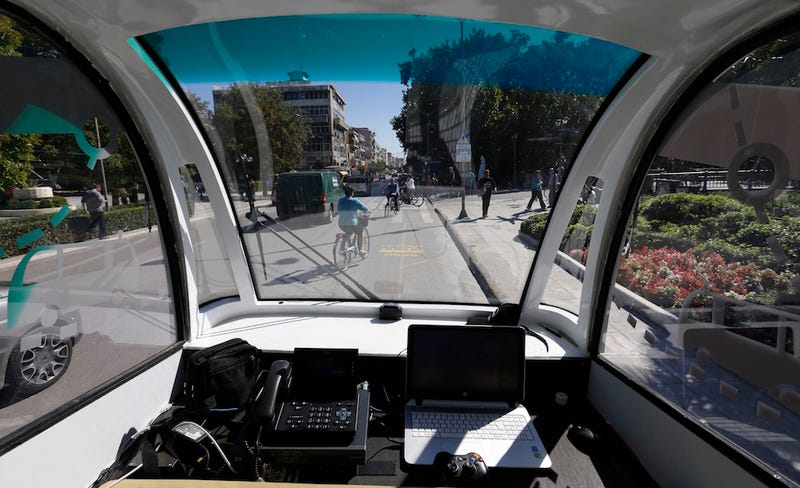In “Transformation for Transit”, Ingrid explains the future of transit in Switzerland. In 2016, Switzerland will begin using driverless transit buses to reach regions previously not serviced. As Ingrid expresses, “the public will have mixed reviews towards this project” and I am one of the citizens against the idea of driverless buses.
Ignoring the safety concerns, Ingrid indicates that the new project will allow the government to “save money on wages”. Although the article states that the innovation is “not meant to replace drivers entirely”, the project will decrease the jobs available. An example of technology increasing unemployment is the self-serve pay station at the grocery store. In recent years, grocery stores have decreased the number of cashier positions and replaced them with self-serve pay stations. Although the stations still have cashiers on hand, there is only one cashier for about eight registers. While cashiers are still needed, the innovation has eliminated jobs from many others. The implementation of the new technology parallels the roll out of driverless buses in Switzerland. Although the driverless buses may be able to reach regions previously not serviced by public transportation, I don’t believe that the economic cost of buying the new technology and eliminating jobs is a beneficial venture.
I am also against the project for a variety of safety concerns. As Google continues to test its driverless car in California, many inquiries have been made and one particular article stuck with me, “Computers could decide who lives and dies in a car crash.” Unlike people who must make quick and instinctual decisions in a “do-or-die” situation, a computer controlled car must be programmed to make the difficult decisions beforehand. Driverless vehicles are faced with the “driver vs. pedestrian dilemma”. In the event of an unavoidable accident, the computer must be pre-programmed to decide whether to severely injure the pedestrians or perhaps attempt to avoid them while putting its passengers’ safety at risk. This ethical question becomes even more challenging when children and seniors are added to the equation. I am personally uncomfortable knowing the outcome prior to being faced with the unfortunate situation and am unsure of how the programmers will be able to reach a conclusion. Should driverless vehicles be programmed to at all times protect its passengers, or should the idea of saving the greater good persist in all cases?
Referred to:
Photo:
Further Reading:
